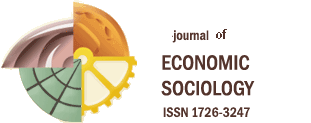Yana Roshchina
Health-Related Lifestyle: Does Social Inequality Matter?
In this research, some practices associated with a healthy lifestyle (e.g., playing sports, eating nutrition foods regularly, avoiding smoking, and not abusing alcohol) are investigated. On the basis of the RLMS-HSE data, we analyze how the percentage of Russians using these practices changed from 2000 to 2014, and how the adherence to the healthy lifestyle depends on the different socio-economic factors. Cluster analysis did not refute the hypothesis that many lifestyles exist between the most and the least healthy choices depending on which factor influences health. Thus, it was possible to find eight health-related lifestyles: healthy, unhealthy, and others in between them (“preventive”, “passive”, “neutral”, “moderate risk”, “negative effect of harmful work”, and “smoking”), which are distinguished by the level of their risk index and by the main negative effect on health. Regression analysis has shown that, all other things being equal, social class significantly influences the choice of health-related lifestyle (“neutral” being a base category) for all styles except “moderate risk.” A model using dummies of social classes as determinants is better construed than another one using the separate parameters of social status (e.g., education level, income, and professional status). Therefore, the “healthy” and “preventive” lifestyles are the most typical for “higher” and “higher-middle” classes. “Middle-middle” classes suffer from the negative effect of harmful work. Both “lower” and “lower-lower” classes are disposed to “passive” and “smoking” lifestyles. The “lower-lower” class also chooses the most “unhealthy” lifestyle, which is characterized by alcohol abuse.




.gif)






 ©
© 